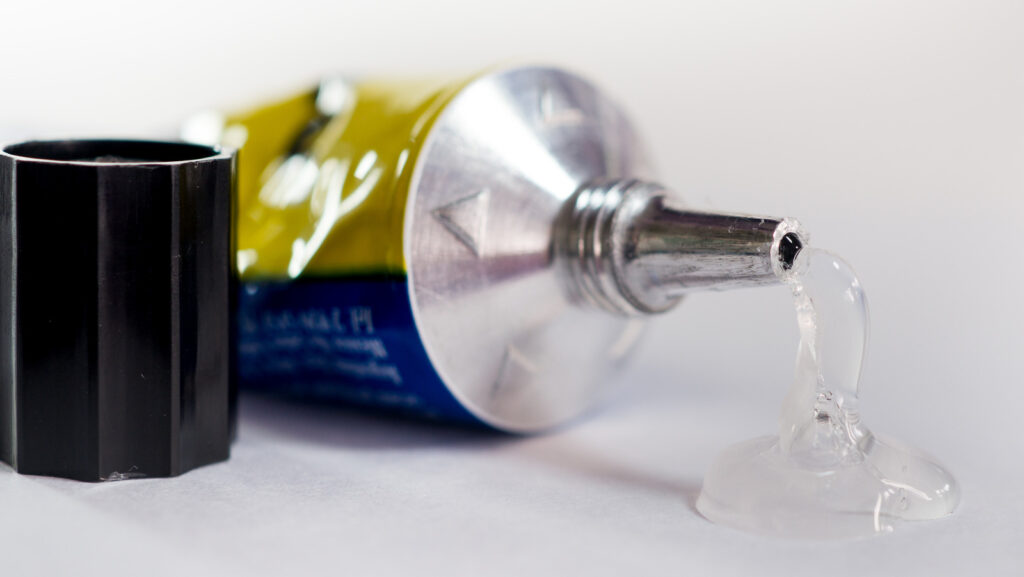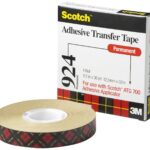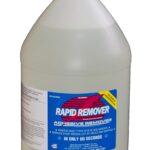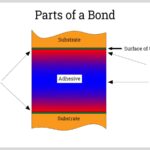Disposing of glue is not as straightforward as other materials. Here are some tips to help you properly get rid of glue. Firstly, ensure that the glue is dry and hardened before attempting to dispose of it. This will make it easier to remove and reduce the risk of any mess. Next, scrape off as much of the glue as you can.
You can use a putty knife, razor blade, or a stiff brush to help with this. Carefully remove all of the glue residue, and make sure to wear protective gloves for your safety. Once all of the glue is removed, it can be safely disposed of in the garbage. It is important to place the glue in a sealed container and to make sure that it is not left exposed in the trash can. If you want to take a more environmentally friendly approach, you can look into recycling the glue. Many local recycling centers accept glue, but it is important to research their policies beforehand. Finally, always be sure to read the product label prior to disposing of the glue. This can provide you with important safety information and will ensure that your disposal is done properly.
How to dispose of expired adhesive
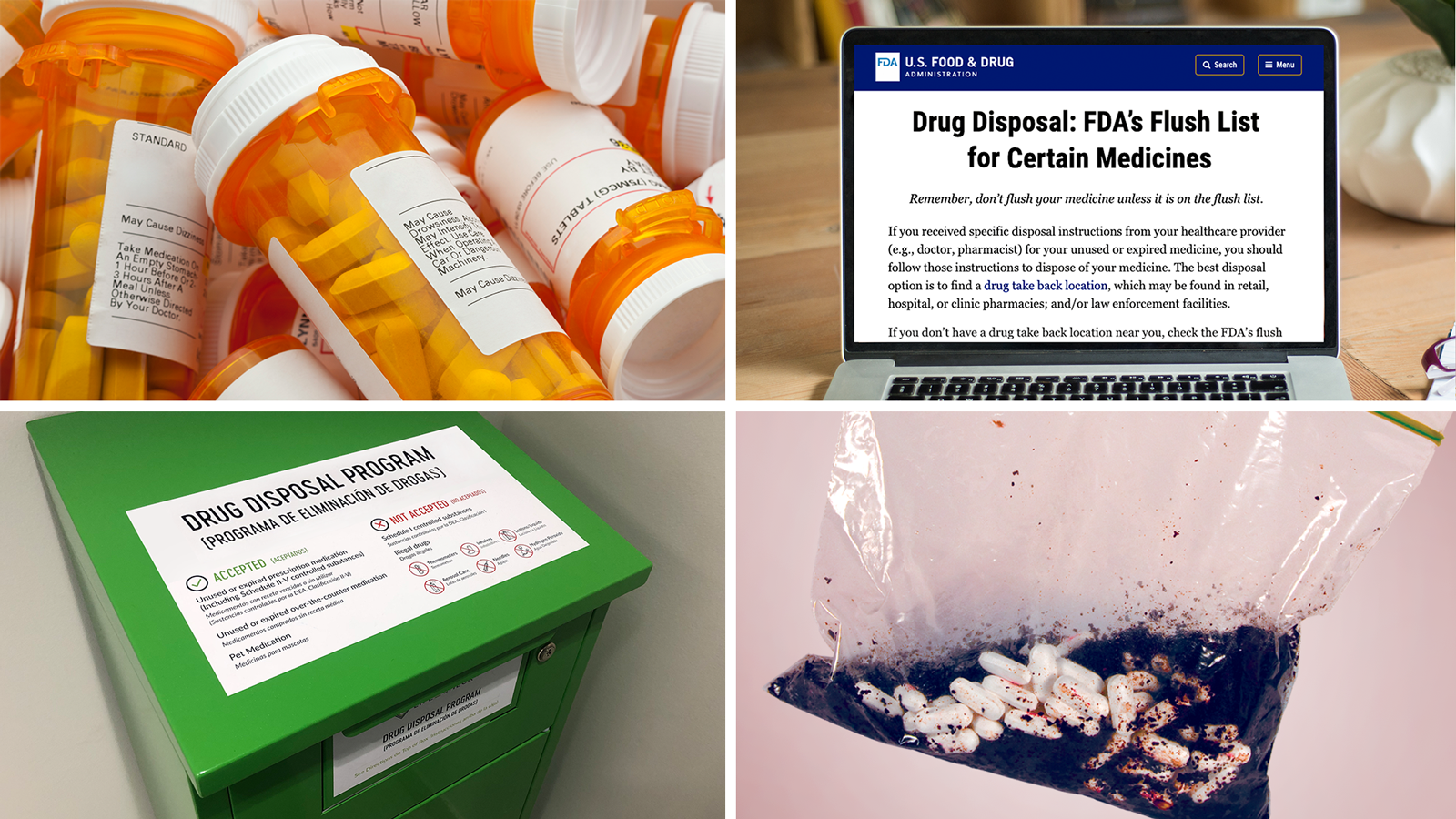
When it comes to disposing of glue, one must take into account the type of glue that needs to be gotten rid of. Expired adhesives, such as glue, should be disposed of properly by following the guidelines set by your local waste management agency. The first step is to check for any special instructions for disposing of expired adhesives, such as whether you should place the adhesive in a separate container. If there are no specific instructions, then the adhesive can be placed in the garbage, preferably in a sealed plastic bag. If you have a large quantity of expired adhesive, it might be best to contact your local waste management agency for advice on how to best handle the disposal.
They may have a special program for hazardous materials such as glues and adhesives. Be sure to keep the adhesive, and any containers you place it in, away from children and pets to ensure that they do not get exposed to any harmful chemicals. It is important to remember that expired adhesives should not be flushed down the toilet or sink drains as they can damage the environment. The best way to dispose of expired adhesive is to follow the guidelines set by your local waste management agency.
Is adhesive a hazardous waste?
Adhesive is considered a hazardous waste and should not be disposed of as regular trash. It is important to take the proper steps in disposing of glue as it can contain harmful chemicals. Firstly, check to make sure that the glue is not still wet. If it is wet, it should be stored in an airtight container until it is completely dry. Once the glue is dry, it should be placed in a sealed plastic bag and disposed of in a hazardous waste container.
Be sure to check with your local waste management department for further information on how to safely dispose of adhesive. It is also recommended to keep the container away from children and pets, as accidental ingestion of glue can lead to serious health problems. Finally, if you come into contact with adhesive, be sure to wash your hands thoroughly.
Can you recycle adhesive?
Adhesives can either be recycled or repurposed to be used in a different way. If an adhesive has been used for its intended purpose and is still in good condition, it can be donated or sold to someone else who may find a use for it. If the adhesive has been used for a craft project, it can be cut or melted into shapes or used as a sealant. To prepare adhesive for recycling, it must be sorted into categories such as paper, metal, plastic, or rubber. The adhesive should also be cleaned of any residue or dirt before being recycled.
Once the adhesive is sorted and cleaned, it can be brought to a local recycling center to be reprocessed into other materials. In addition to recycling, there are other ways to dispose of glue. Glue can be placed in an appropriate container, such as a sealable plastic bag, and disposed of in the trash. It is important to ensure that the glue is sealed properly before disposal. By recycling or repurposing adhesive, we can help reduce the amount of waste created when disposing of glue. This can help conserve resources and lower our environmental impact.
How do you dispose of adhesive caulk?
Disposing of adhesive caulk is relatively easy, but there are some important steps to take to make sure it’s done correctly. The most important thing is to make sure that the caulk has hardened before attempting to dispose of it. Otherwise, it will end up in the landfill in an unusable form. Once the caulk is hardened, it can be scraped into the trash using a putty knife. The remaining residue can then be wiped off with a damp cloth.
If needed, a mild detergent can also be used to break down any remaining residue. The collected caulk should then be placed in a sealed plastic bag or container before being disposed of in the trash. The container should be labeled with a “Caulk” label so that the waste disposal personnel know what they are dealing with. If the caulk is being disposed of in a hazardous waste facility, it’s important to make sure it’s properly labeled and packaged according to the facility’s guidelines. Adhesive caulk can also be reused or recycled. If you’re disposing of a large quantity of caulk, you may be able to find a recycling program that will take it. In some cases, the caulk can be donated to charities or other organizations that can make use of it.
How to dispose of elmer s glue

Glue can be difficult to dispose of in an environmentally friendly way. Elmer’s glue is no exception. To properly dispose of Elmer’s glue, follow these steps:
- If possible, allow the glue to dry completely and then throw away the hardened glue in the garbage.
- If the glue is still wet, dispose of it in the sink. Do not allow the glue to go down the drain as this could clog it.
- If the glue is water soluble, then pour warm water over it and allow it to dissolve and wash away.
- If the glue is not water soluble, wrap it in a newspaper and throw it in the garbage.
- If the glue is hazardous, find a local hazardous waste disposal facility to properly dispose of it.
How do you dispose of expired glue?
Disposing of expired glue can be tricky, as it is not easy to determine when it has expired. It is best to consult the instructions on the label of the glue, and pay attention to the expiration date. If the glue has expired, you should avoid disposing of it in the regular trash, as it may contain hazardous chemicals. To be safe, it is best to take expired glue to a hazardous waste facility, or contact your local waste management company for advice. If you are unable to take it to a hazardous waste facility, you can try to break it up and spread it over a large area, such as a field or a beach.
However, this is not recommended as it could be harmful to the environment. Another option is to contact the manufacturer of the glue and ask for advice on how to dispose of the expired glue. They may offer suggestions on how to properly dispose of the glue, or they may offer to take the glue off your hands. No matter what, it is important to take caution when disposing of expired glue. The safest option is to take it to a hazardous waste facility, or contact your local waste management company for advice.
What breaks down dry glue?
Disposing of dry glue can be somewhat challenging. Knowing what breaks it down can be helpful in getting rid of it. The main thing that breaks down dry glue is heat. When dry glue is exposed to heat, it will begin to liquify, making it much easier to wipe off of surfaces. Applying heat to the glue can be done with a hairdryer or heat gun.
The other thing that breaks down glue is soap. Soap and water can help break down the glue and make it easier to wipe off. If the glue is on a delicate surface such as fabric, then applying a strong solvent such as acetone or alcohol may be necessary. However, it is best to test these solvents on an inconspicuous part of the surface first to make sure it does not damage the material. Ultimately, the best method to dispose of glue is to combine different approaches, such as applying heat and then using soap and water to wipe away the remaining glue. This will ensure that the surface is not damaged and the glue is gone.
How long does it take for glue to go bad?
It is important to dispose of glue properly, as it can go bad over time. How long it takes for glue to go bad depends on the type of glue. Most glues will last for at least a few years, but if not stored properly, they can form mould or mildew, or become too thick or dry to use. It is important to read the label of the glue before disposing of it, as some glues may have different expiration dates. To ensure the glue is still safe to use, check for signs of mould, mildew or discolouration, as well as a change in the consistency.
If any of these signs are present, it is best to discard the glue. To dispose of glue, use a plastic bag or container and place it in the trash. Never pour glue down the sink or toilet, as it can clog pipes. By understanding how long glue lasts and how to properly dispose of it, you can ensure that it does not cause any harm to the environment.
Is glue hazardous waste?
In most cases, glue should be disposed of as regular trash, as long as it is completely dried out. If the glue is still wet, it should be collected in a separate container to avoid mixing it with regular trash. If the glue is hazardous, such as a chemical-based glue, it must be disposed of in accordance with the instructions of the local environmental health authorities. Specific guidelines may vary depending on the type of glue and the area you live in. When disposing of glue, make sure to never pour it down a sink, toilet, or storm drain.
This can pollute streams and rivers, leading to potential health risks for humans and wildlife. If the glue is an aerosol-based product, it may be labeled as dangerous goods, and there may be additional safety procedures that must be followed when disposing of it. Check the product label for any further instructions. In conclusion, it is important to take the necessary steps to dispose of glue correctly and safely, taking into consideration the type of glue and the regulations from your local authorities.
Is Elmer’s glue hazardous?
Yes, it is. Elmer’s glue contains chemicals that can be hazardous to people and the environment if not disposed of correctly. When disposing of Elmer’s glue, make sure to put it in a sealed container to avoid accidental spills. Then, you can take it to your local hazardous waste facility for proper disposal. Do not pour it down the sink or flush it in the toilet.
It is important to remember that Elmer’s glue should never be burned or thrown into a trash can. This could release toxic fumes into the air, and potentially cause injury or damage to the environment. If you have a large amount of Elmer’s glue to dispose of, it is best to contact your local government for assistance or to see if there are any special disposal instructions. By properly disposing of Elmer’s glue, you can help protect yourself, your family, and the environment. Be sure to follow the instructions to make sure you are disposing of it safely and responsibly.
Is glue toxic after drying?
Glue is generally considered non-toxic, however, it is important to note that the toxicity of glue after it has dried depends on its type. For instance, many craft glues, such as polyvinyl acetate (PVA) glue, are considered non-toxic, even after they have dried. On the other hand, contact adhesives, like most other forms of industrial glue, may contain toxic chemicals, so it is important to check the label before disposing of glue. When it comes to disposing of glue, the best method is to allow it to harden and then throw it away with regular household trash. If you are disposing of a large amount of glue, you should check with your local waste disposal service for any specific guidelines or regulations.
Ultimately, it is important to be aware of the potential dangers of the glue you are using. Unused and dried glue should always be disposed of carefully to avoid potential hazards. When it comes to disposing of glue, checking the label is key to ensure you are disposing of it safely.
Can Elmers glue be recycled?
Recycling Elmers glue is not recommended. Glue is made up of several components that can’t be separated for recycling. It is better to find a new, creative use for the glue or properly dispose of it. If you have leftover Elmers glue, you can safely dispose of it by putting it in the garbage bin. Keep the glue tube sealed and be sure to keep it away from children and pets.
If you want to reuse Elmers glue, you can use it for a variety of creative projects. For example, you can use it to make a mask, paper mache, or a model of your favorite animal. Finally, you can also opt to give away your unused glue to a school or art center. This way, you can help others while also disposing of your glue safely. No matter what you choose to do with your leftover Elmers glue, make sure it is disposed of responsibly. Don’t forget to clean up any spills or residue before disposing of it.
Is Elmer’s glue safe for the environment?
Yes, Elmer’s glue is generally considered safe for the environment when disposed of properly. When disposing of Elmer’s glue, make sure to avoid releasing it into the environment. The best way to do this is to place it in a sealed, non-leaking container and then take it to a local hazardous waste collection centre. When using Elmer’s glue, use it in a well-ventilated area, as the fumes can be dangerous and may also be harmful to the environment. Another way to dispose of Elmer’s glue is to use a biodegradable glue remover.
This type of remover is non-toxic and biodegrades quickly, making it a more eco-friendly option. It is important to remember to always follow the instructions on the label when disposing of Elmer’s glue. This will ensure that you are doing your part to protect the environment.
How to recycle glue sticks
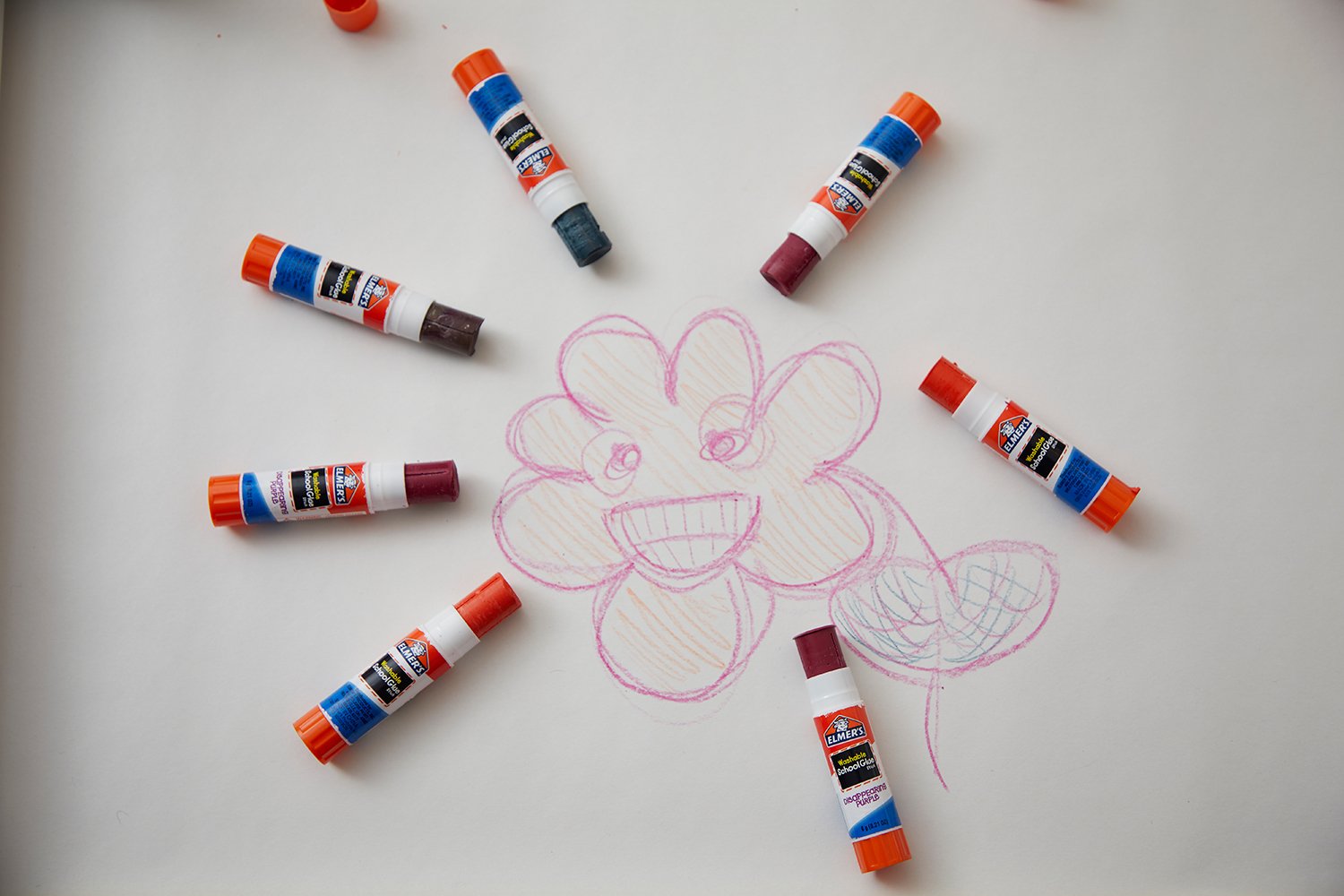
Here are some tips to help make sure you do it right:
- Separate the glue sticks from any other materials they may be attached to.
- If the glue sticks are still usable, donate them to a local school or art group.
- If the glue sticks are not usable, break them into small pieces and place them into a plastic bag or container.
- Take the bag or container to your local recycling center, where they will be recycled into new products such as plastic pellets.
- Make sure to check with your local recycling center for any additional guidelines they may have for disposing of glue sticks. By following these steps, you can ensure that your glue sticks are disposed of properly and help to keep our environment clean.
Can paper with glue stick be recycled?
Recycling paper with glue stick can be a tricky process. In order to properly dispose of glue, it needs to be separated from the paper before recycling. Before throwing the paper away, any excess glue should be scraped off or soaked up using a cloth, paper towel or sponge. Once the paper is free of glue, it can be recycled in the same way as regular paper. However, it is important to check with your local recycling center to ensure they will accept it.
If possible, it is best to try to reuse the paper instead of recycling it. This is because the paper may be contaminated with chemicals from the glue. Reusing the paper for crafts or other projects can help prevent it from entering the waste stream. If the paper is not suitable for reuse, it is important to properly dispose of the glue. Glue can be disposed of with your regular household waste. It is best to remove the lids from any glue containers, and to make sure the glue is not in liquid form before throwing it away. In conclusion, paper with glue stick can be recycled, but it is important to take steps to ensure the glue is properly disposed of first.
Is glue stick eco-friendly?
Glue sticks are often considered to be eco-friendly, as they are made of non-toxic materials and are biodegradable. However, it is important to dispose of glue sticks in an environmentally responsible way. The most common way to dispose of used glue sticks is to place them in a trash bag or container that can be taken to a local recycling center. It is important to ensure that the glue stick is sealed in a container or bag so that it doesn’t leak onto other items or into the environment. If possible, it is best to contact the manufacturer of the glue stick to ask for their recommended disposal method, as it may require more specialized handling than just taking it to a recycling center.
If the glue stick cannot be recycled, it is best to throw it away in a sealed container so that it doesn’t leak out into the environment. It is also important to make sure that the container is labeled as containing glue in order to alert waste handlers of the potential hazardous material. Finally, it is important to remember that while glue sticks may be considered eco-friendly, they should still be disposed of responsibly in order to protect the environment.
Is glue stick biodegradable?
Glue sticks are an essential item for many craft and repair projects, but it is important to know how to safely dispose of them when you are finished. The good news is most glue sticks are biodegradable, meaning they can be broken down by natural microorganisms. To properly dispose of a glue stick, start by wiping off any excess with a damp cloth or paper towel before discarding. You can then break the stick into small pieces and put it in a compost bin or add it to your regular trash. When disposing of your glue stick, it is important to remember that even biodegradable materials take time to decompose.
This means that if you put your glue stick in a landfill, it can take years to break down. If you are looking for an eco-friendly way to dispose of your glue stick, consider recycling it. Many municipalities have recycling centers that accept used glue sticks and other craft materials. It is important to remember that even biodegradable glue sticks can take years to break down, so it is best to dispose of them properly by either composting or recycling. Doing so will help ensure your glue stick does not take up space in a landfill for years to come.
Can glue sticks be recycled?
Glue sticks can be recycled, but you need to make sure they are disposed of properly. When discarding, break off the unused portion of the stick and then place it in a paper bag or cardboard box. This will prevent the glue from sticking to other items. Glue sticks should be recycled with other plastics. Check with your local recycling center to determine if they accept them.
If they do, make sure the glue sticks are properly cleaned and dry before dropping them off. If your local recycling center does not accept glue sticks, you can either dispose of the glue stick in the trash or find a local organization that recycles plastics. Be sure to read the label on the glue stick package to ensure it is made from recyclable material. If not, it should be disposed of in the trash. When disposing of glue sticks, it is important to use caution and follow the instructions on the label. Glue sticks can be difficult to remove once stuck and can be hazardous if not disposed of correctly.
Can you recycle Elmer’s glue?
Recycling Elmer’s glue is possible, but it is not as simple as recycling other materials. Glue is a composite of different materials, some of which can be recycled while others are not. Generally, glues are made of polyvinyl acetate, which is not recyclable. However, there may be other components in Elmer’s glue that are suitable for recycling. The best way to find out if you can recycle Elmer’s glue is to check with your local recycling center.
They will be able to tell you which components of the glue are recyclable, and what the process is for recycling them. If your local recycling center cannot recycle Elmer’s glue, you can still dispose of it in an environmentally friendly way. The glue can be broken down into small pieces and put in the trash. It can also be diluted with water and poured down the sink. It is important to be conscious of how you dispose of Elmer’s glue and other materials. Whenever possible, aim to recycle and reuse materials rather than throwing them away. This will help to reduce the amount of waste produced and promote a more sustainable environment.
What can I do with leftover glue sticks?
Disposing of leftover glue sticks can be tricky. It is important to check with your local waste management office to find out what the proper disposal methods are in your area. In general, glue sticks are considered hazardous waste and should not be thrown away in the regular trash. Depending on the type of glue, you may be able to take it to a hazardous waste disposal facility. If the glue is not hazardous, you may be able to recycle it.
If the glue is still usable, consider donating it to a school or art studio. It can also be taken to a thrift store or given to someone who can use it. If you have a lot of leftover glue sticks, you may be able to craft with them. There are plenty of creative ways to use them, such as making a glue stick wreath, painting them, or crafting a vase. When disposing of glue, it is important to follow the necessary guidelines. This will help to ensure the safety of the environment and those around you.
